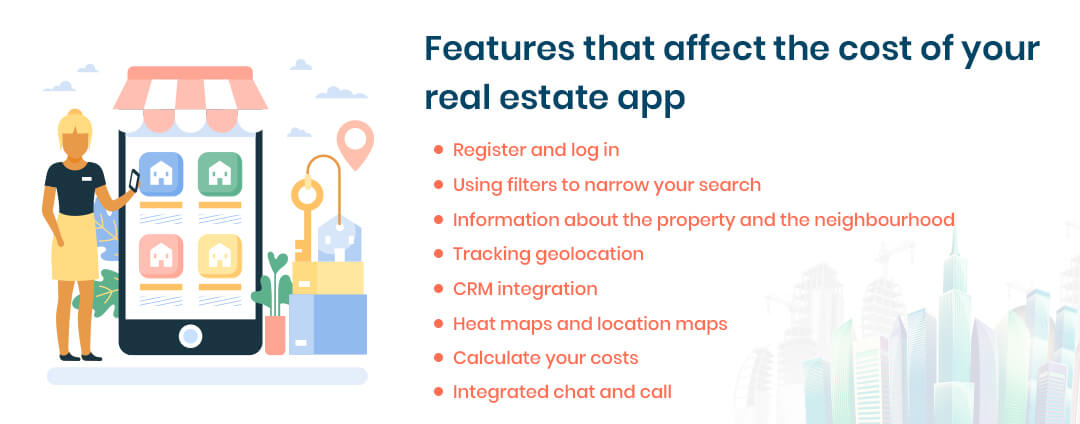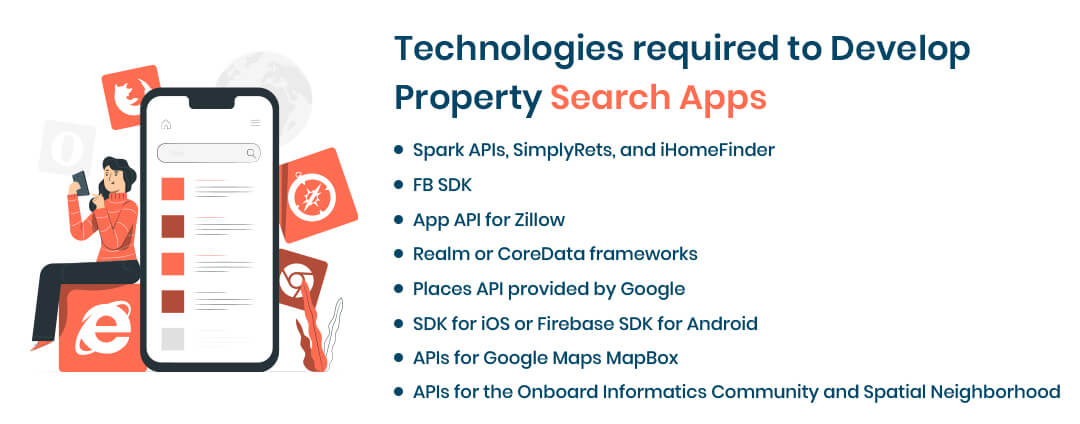With all the expanding options for real estate owners, it is evident that they’re in fierce competition with each other at present. Compared with the latest technological advancements, traditional marketing methods or advertising cannot promote the real estate business. Real estate businesses are engaging in developing mobile apps that have essential industry measures out of all of these advancements.
In today’s society, buyers and sellers are exploring their options from the comfort of their own homes. Buying or selling property was extremely difficult, where one had to invest significant time and resources in finding a suitable property. Since real estate mobile apps have been developed, all offline work processes have been eliminated. Trulia and Zillow represent the other two giants in this segment. As a pacesetter in the property industry, these applications have access to all the essential features. Furthermore, with the insightful approach and online advertising solutions, the real estate industry has become more transparent, and users receive a better experience.
Developing a real estate app like Trulia or Zillow requires an understanding of why these apps are successful. In this blog, you can learn how to develop a compelling real estate application and the cost of developing a real estates app like Trulia or Zillow.
Features that affect the cost of your real estate app

1. Register and log in
With more signup/sign-in options, it will be easier for app users to navigate your app. Keep your app trustworthy by using two-step authentication, sending a text message code, or using the user’s biometrics. You can also make it more intuitive for your audience to sign up by including seamless guidance with tips along the way.
2. Using filters to narrow your search
Provide your users with options to filter houses based on price, location, number of rooms. A wide variety of search filters are available on Trulia, which gives buyers a new level of flexibility. Rental properties can be sorted according to whether they are cat- and dog-friendly, by keyword, and property type, among others. Try to simplify users’ lives every step of the way. The customer can quickly find the best property for their needs, whether it’s based on the date of publication, the neighbourhood, parking availability, or similar factors.
3. Information about the property and the neighbourhood
Information on the Web should be as detailed as possible while engaging and entertaining users. For example, you can find photos, amenities, and stories about 34 neighbourhoods on the Trulia app. The heat maps allow users to determine whether local schools meet their requirements, if the neighbourhood is friendly, and how much crime there is in the area. Providing personalized and relevant information may sometimes require Big Data.
4. Tracking geolocation
A map featuring nearby houses is displayed when users utilize the feature. For this type of search, GPS or Geotags are used. In the real estate search process, it can be beneficial.
5. CRM integration
Real estate agencies that wish to develop an application may find this one particularly helpful. Through it, you can get real-time analytics about your leads and sales. As soon as this data is collected, you can formulate your marketing and promotion plans, delivering relevant offers and updates.
6. Heat maps and location maps
Property information can be easily presented using a map. It is possible to identify crime rates based on different colours. Take note of natural disaster risks, nearby infrastructure, and the cost of properties in the area. Additionally, clustering your markers will help you avoid overcrowding your map. Your users can select the search criteria to be displayed to them, so they can determine the level of information they wish to see. You should also offer a list view of houses and a map view for a greater level of service.
7. Calculate your costs
Home loan interest rates can be calculated in some applications. Other calculators estimate property prices based on loan amounts, taxes, and other factors. Additionally, you can integrate push notifications to alert users when a new item appears.
8. Integrated chat and call
The app should allow users to contact a real estate agent directly through the app. The interested party’s online status should be disclosed to him. During online conversations, users can find out more about specific properties and move down a sales funnel. You will close more deals, and your sales processes will be faster.
Technologies required to Develop Property Search Apps

What is the cost of developing real estate apps such as Zillow or Trulia?
It isn’t easy to define the property search app cost, but let us provide you with some deeper clarification.
If the app contains similar features to those listed above along with the same technology stack, then you can expect to pay around $30,000 – $40,000 for the development of a Zillow-like app.
Taking into account the features and portfolio of technology stacks discussed above, this is what we have settled on as the most practical range. The cost of the sets would change if the sets were modified.
You must determine ways to earn money after spending a figure like what was spent on Zillow or Trulia as an example of the cost of developing a real estate app. Our next focus will be on recognizing its importance.

How to use a monetization model when developing real estate mobile apps?
Apps that display real estate listings can make money in a variety of ways. Our clients are advised to do the following:
- Property Management Companies: Sell ad slots
- Real Estate Agents’ Premier Service Provider
- Mortgage Lenders and Businesses Like Them: Sell Ad Slots
Unless you get a foothold in the rapidly congested mobile space, the money you spent on researching How to Make a Real Estate App Like Zillow and Trulia will never be able to cover the development costs with profits.

Conclusion
You should have a clear idea of the app’s goals before going deeper into the technology stack and platform requirements. You should study the market and do equivalent research, alongside evaluating all existing apps available in the store. Also, you can incorporate some additional features into your app to make it more attractive and give your product more value.
The process of finding the right team of dedicated developers and selecting the app development platform to be used begins after you have a clear vision of the application. As soon as you have analyzed all the cases, you can start executing your real estate application.



![How To Hire Remote Developers in 2021? [Complete Guide that 100% Help You]](https://www.auxanoglobalservices.com/agsresources/wp-content/uploads/2021/05/Front-Hiring-Remote-Workforce-or-Dedicated-Developers-in-2021.jpg)

